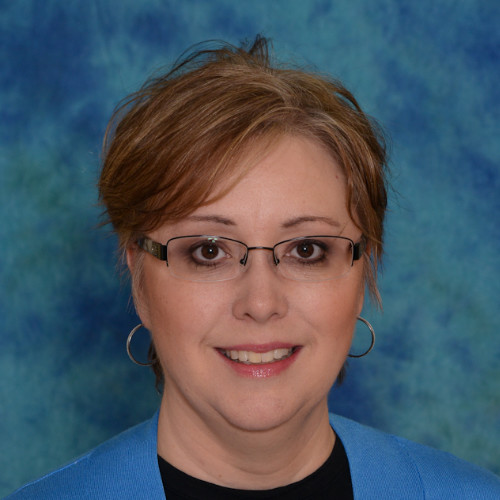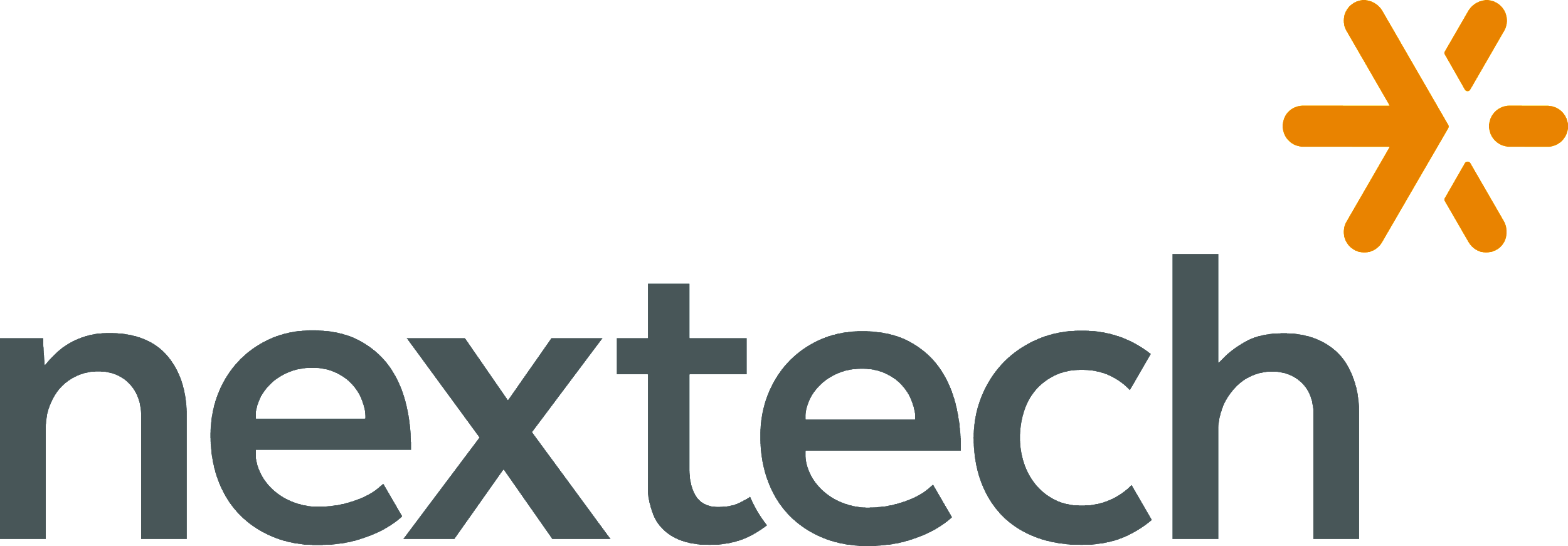Impact Stories: Joann
Each November, American Education Week honors the individuals who give their all to ensure every student receives a quality education. We spoke to one of them: Joann Novak, teacher at The Academy of Science and Entrepreneurship in Bloomington, Ind.
Let’s Stop Scaring Students Away from Computer Science, Teacher Says

Of the students who won the first overall prize at the 2021 AT&T 5G Sports Hackathon, not all of them were computer science students. This illustrates what their teacher, Joann Novak, says is a central issue in computer science education today: When students aren’t scared away from CS with language about “coding” and “programming,” they jump in with both feet.
Novak teaches two career/college prep pathways offered at The Academy of Science and Entrepreneurship in Bloomington, Ind.: Computer Science (Informatics) and Business & Entrepreneurship. Because the latter draws all types of non-CS students, the hackathon seemed like a ready-made project for her classes.
In fact, members of what turned out to be the hackathon team were already collaborating on projects within INCubatoredu, a full-year entrepreneurship course in which students develop a product or service from the ground up. Three of those students were also in one of Novak’s CS classes.
“I’ve kind of embedded a CS class into my entrepreneurship class,” Novak said. “I thought the hackathon would be a nice marriage between computer science and entrepreneurship, so I proposed it to my entrepreneurship students first. They jumped right in,” she said.
‘Computer science’ comprises many skills
Unlike so many Indiana students, Novak’s understand that computer science encompasses far more than just coding (or learning how to hack).
“With INCubatoredu, they start with nothing and develop a business model throughout the year: marketing, financial, prototyping, surveying, data analysis, all of that. We have coaches from the community that teach some of the lessons for us. Students will make their pitches this December and start prototyping next year,” Novak said.
The process involves computer science principles: problem-solving, creativity, data analysis and more, principles Novak doesn’t confine to a class labeled “computer science.”
“In our coursework, we take the strengths of all our students and blend them in a way that supports whatever project they’re working on. The same thing happened with the hackathon. Each student brought something unique, whether it was film editing, process management, whatever.”
This year’s hackathon challenge: Come up with a technology solution for a sports-related problem. Novak’s students designed an app tied to ticketing for sporting events.
“In their concept design, the app would open up a map to the stadium and, using seat assignments, provide first responders with the best route to get to someone based on the population in the stands,” she said. “The app also would tell the ticket holder which restrooms and concession stands were being used the most. Oh, and it shared information about where to park.”
Not only did the team win the overall first prize for Best Application. They also won for Accessibility, Most Innovative Feature Set and Most Complete Feature Set. The ease with which the team came together and the natural ties between entrepreneurship and CS are why Novak believes CS’ reputation for being all about coding and programming isn’t serving students.
“So many careers are available in computer science that don’t involve programming. Unfortunately, a lot of the coursework starts out that way, and it does a disservice to CS and our students because there’s so much more you can do. Schools and colleges don’t even define computer science the same way, so kids aren’t sure which program they should enroll in to match their interests and goals,” she said. “High school programs need to get better educated on what opportunities are available with a computer science education beyond programming.”
Best answer for students is same for teachers
Indiana requires high schools to offer at least one computer science class, but it’s not a graduation requirement. The Academy found a way to comply with the mandate in the same way many schools have: they assigned computer science class to a business teacher because they’re automatically licensed to teach it. That’s an already-busy, has-a-full-schedule teacher who, though trained in business, is not usually trained in CS.
That’s not the best answer for teachers or those they teach, Novak said.
“The biggest obstacle for any teacher asked to teach computer science is time,” Novak said. “A lot of teachers aren’t being trained in CS – they’re being trained in another area first, like business, then they’re asked to add this credential. They also have to find room in their day to teach it, which means we have to decide what subjects we keep teaching and what we let go. Right now, I’m teaching students in three different classes in the same period to get everything done.”
Teachers suddenly tasked with teaching CS need additional training, which is nearly impossible for many.
“It can be very intimidating to be told, ‘By the way, you have to pick up CS next year.’ I’m very fortunate that my husband supports me and my career. For so many working professionals, though, it’s a lot to ask that they go back to school so they can teach this demanding discipline, usually without a bump in pay,” Novak said. “It’s rewarding and I’m glad I’ve taken the steps I have, but it’s not as accessible to as many people as it needs to be, and that’s a shame. It’s not just, ‘Here’s a little extra coursework.’ It’s a big undertaking.”
To learn CS, Novak has tried to take advantage of every Nextech teacher training opportunity.
“I didn’t want to do a disservice to my students. Even if I didn’t have the content knowledge I would’ve liked [to teach CS], I’d know how to facilitate,” she said. “Nextech provides generous stipends. I feel I do get that respect. They’ve been awesome about ensuring teachers are compensated for their time since teachers normally have to pay for their own professional development. I feel very respected and appreciated in those arenas because of the value they place on computer science education.”
Teachers who are willing to do all this are hard to find. Novak said making the discipline more inclusive for female and non-white teachers is a good place to start.
“As of right now, it does tend to be very white-male dominated. Most of my students are white males, too. I really would like to see more students feel that computer science is for them, which means they need to see teachers who look like them.”
Indiana should be a leader
Computer science is happening in almost every classroom. Whether it’s being taught by trained teachers or reaching all students who need to understand the technology and ways of thinking they’ll need for tomorrow’s jobs is another story.
“Kids automatically navigate toward tech solutions, whether it’s development or support or marketing. Regardless of whether they’re a programmer or not, they’re using computer science knowledge to work through data. I think some sort of required computational thinking course would be beneficial,” Novak said. “Perhaps we have a class where students are analyzing data for truth and accuracy. We wouldn’t call it programming, and they’d certainly use a lot of the principles of data science.”
Joann Novak is a member of CSTA

Of the students who won the first overall prize at the 2021 AT&T 5G Sports Hackathon, not all of them were computer science students. This illustrates what their teacher, Joann Novak, says is a central issue in computer science education today: When students aren’t scared away from CS with language about “coding” and “programming,” they jump in with both feet.
Novak teaches two career/college prep pathways offered at The Academy of Science and Entrepreneurship in Bloomington, Ind.: Computer Science (Informatics) and Business & Entrepreneurship. Because the latter draws all types of non-CS students, the hackathon seemed like a ready-made project for her classes.
In fact, members of what turned out to be the hackathon team were already collaborating on projects within INCubatoredu, a full-year entrepreneurship course in which students develop a product or service from the ground up. Three of those students were also in one of Novak’s CS classes.
“I’ve kind of embedded a CS class into my entrepreneurship class,” Novak said. “I thought the hackathon would be a nice marriage between computer science and entrepreneurship, so I proposed it to my entrepreneurship students first. They jumped right in,” she said.
‘Computer science’ comprises many skills
Unlike so many Indiana students, Novak’s understand that computer science encompasses far more than just coding (or learning how to hack).
“With INCubatoredu, they start with nothing and develop a business model throughout the year: marketing, financial, prototyping, surveying, data analysis, all of that. We have coaches from the community that teach some of the lessons for us. Students will make their pitches this December and start prototyping next year,” Novak said.
The process involves computer science principles: problem-solving, creativity, data analysis and more, principles Novak doesn’t confine to a class labeled “computer science.”
“In our coursework, we take the strengths of all our students and blend them in a way that supports whatever project they’re working on. The same thing happened with the hackathon. Each student brought something unique, whether it was film editing, process management, whatever.”
This year’s hackathon challenge: Come up with a technology solution for a sports-related problem. Novak’s students designed an app tied to ticketing for sporting events.
“In their concept design, the app would open up a map to the stadium and, using seat assignments, provide first responders with the best route to get to someone based on the population in the stands,” she said. “The app also would tell the ticket holder which restrooms and concession stands were being used the most. Oh, and it shared information about where to park.”
Not only did the team win the overall first prize for Best Application. They also won for Accessibility, Most Innovative Feature Set and Most Complete Feature Set. The ease with which the team came together and the natural ties between entrepreneurship and CS are why Novak believes CS’ reputation for being all about coding and programming isn’t serving students.
“So many careers are available in computer science that don’t involve programming. Unfortunately, a lot of the coursework starts out that way, and it does a disservice to CS and our students because there’s so much more you can do. Schools and colleges don’t even define computer science the same way, so kids aren’t sure which program they should enroll in to match their interests and goals,” she said. “High school programs need to get better educated on what opportunities are available with a computer science education beyond programming.”
Best answer for students is same for teachers
Indiana requires high schools to offer at least one computer science class, but it’s not a graduation requirement. The Academy found a way to comply with the mandate in the same way many schools have: they assigned computer science class to a business teacher because they’re automatically licensed to teach it. That’s an already-busy, has-a-full-schedule teacher who, though trained in business, is not usually trained in CS.
That’s not the best answer for teachers or those they teach, Novak said.
“The biggest obstacle for any teacher asked to teach computer science is time,” Novak said. “A lot of teachers aren’t being trained in CS – they’re being trained in another area first, like business, then they’re asked to add this credential. They also have to find room in their day to teach it, which means we have to decide what subjects we keep teaching and what we let go. Right now, I’m teaching students in three different classes in the same period to get everything done.”
Teachers suddenly tasked with teaching CS need additional training, which is nearly impossible for many.
“It can be very intimidating to be told, ‘By the way, you have to pick up CS next year.’ I’m very fortunate that my husband supports me and my career. For so many working professionals, though, it’s a lot to ask that they go back to school so they can teach this demanding discipline, usually without a bump in pay,” Novak said. “It’s rewarding and I’m glad I’ve taken the steps I have, but it’s not as accessible to as many people as it needs to be, and that’s a shame. It’s not just, ‘Here’s a little extra coursework.’ It’s a big undertaking.”
To learn CS, Novak has tried to take advantage of every Nextech teacher training opportunity.
“I didn’t want to do a disservice to my students. Even if I didn’t have the content knowledge I would’ve liked [to teach CS], I’d know how to facilitate,” she said. “Nextech provides generous stipends. I feel I do get that respect. They’ve been awesome about ensuring teachers are compensated for their time since teachers normally have to pay for their own professional development. I feel very respected and appreciated in those arenas because of the value they place on computer science education.”
Teachers who are willing to do all this are hard to find. Novak said making the discipline more inclusive for female and non-white teachers is a good place to start.
“As of right now, it does tend to be very white-male dominated. Most of my students are white males, too. I really would like to see more students feel that computer science is for them, which means they need to see teachers who look like them.”
Indiana should be a leader
Computer science is happening in almost every classroom. Whether it’s being taught by trained teachers or reaching all students who need to understand the technology and ways of thinking they’ll need for tomorrow’s jobs is another story.
“Kids automatically navigate toward tech solutions, whether it’s development or support or marketing. Regardless of whether they’re a programmer or not, they’re using computer science knowledge to work through data. I think some sort of required computational thinking course would be beneficial,” Novak said. “Perhaps we have a class where students are analyzing data for truth and accuracy. We wouldn’t call it programming, and they’d certainly use a lot of the principles of data science.”
Joann Novak is a member of CSTA


